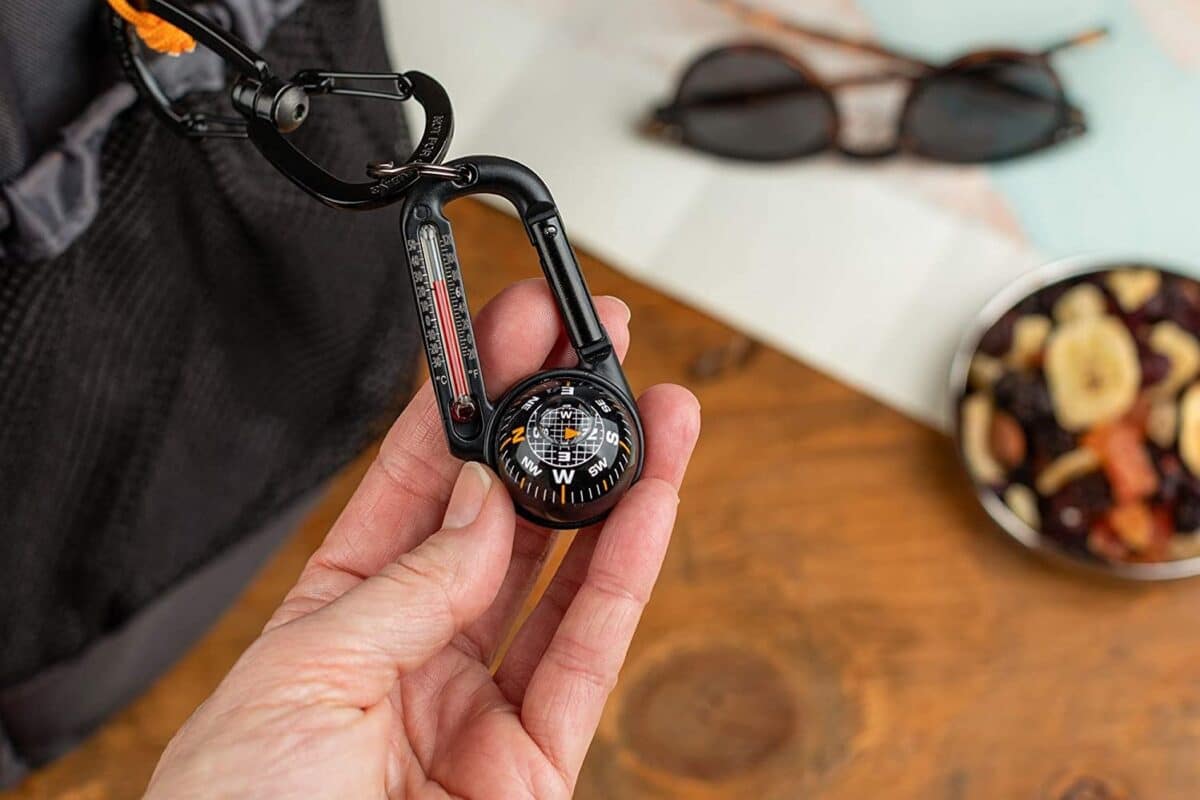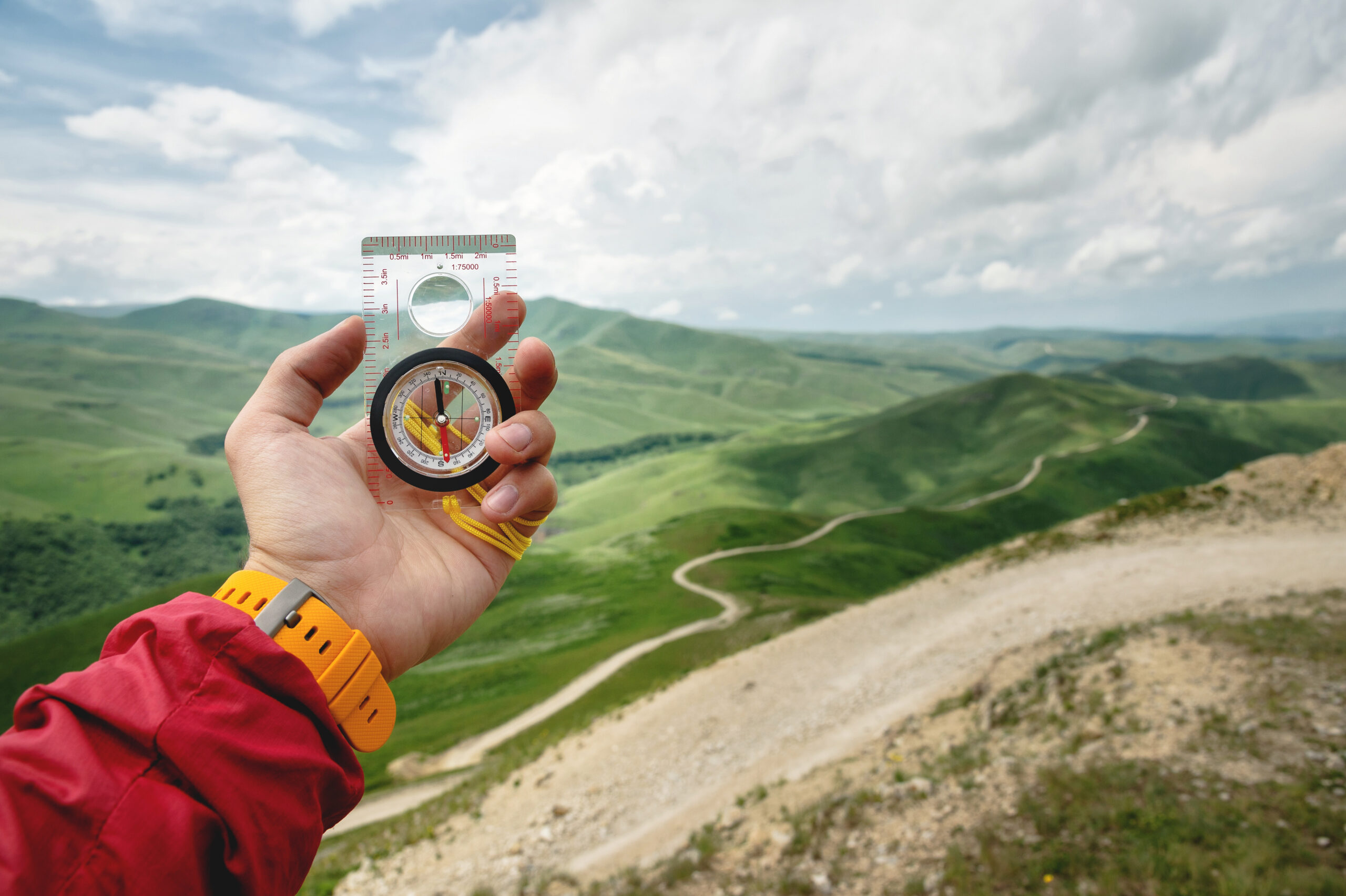
The Best Hiking Compass
This Old House Reviews Team
Having a sense of direction is important when you’re hiking. To find the best hiking compass, visit here to discover our top recommendations.
Getting lost or even mildly disoriented in the wilderness can quickly turn into a life-threatening situation. Though smartphones have GPS technology, limited battery life and lack of cell service can make these unreliable navigation devices. The This Old House Reviews Team researched the best compasses for hiking on Amazon to help you confidently forge ahead. Learn more about our top recommendations here.
https://www.amazon.com/dp/B074S3G74R
Cammenga Handheld Compass
What We Like: If your hiking adventure turns into a downpour, this military-grade compass can get you back home. It even works in the dark with the tritium spots on the dial that softly glow in low-light settings for up to 12 years. It’s versatile enough for hiking, camping, backpacking, hunting, youth scouting, boating, and more.
https://www.amazon.com/dp/B000BS0IT4
Sun Company Carabiner Compass
What We Like: If all you need is a quick glance at your compass to keep moving, we recommend this simple but practical ball compass. For added versatility, it comes with a split ring, so you can attach it to a zipper to use it as a zipper pull or attach it to a keyring to act as a keychain.
https://www.amazon.com/dp/B000JL2CAG
SUUNTO Hiking Compass
What We Like: This compass is pre-balanced for the Northern Hemisphere, ready to triangulate your position on a physical map with ease. If you’re hiking and navigating in the dark, this compass still serves you, as the metric and imperial scale markings glow in the dark. If you need repeated access but don’t have a table to place the compass on, use the included snap-lock lanyard.
https://www.amazon.com/dp/B0000AUSD4
Coghlan’s Whistle Compass
What We Like: Compasses are for more than just navigating in real-world situations—they also make great educational tools to teach young learners the value of orienteering. While a full-size, robust compass may intimidate and confuse first-time users, this simple whistle-compass hybrid will encourage learning. It also includes a plastic clip so that kids can attach it to their backpack, belt loop, or water bottle for easy portability.
https://www.amazon.com/dp/B075ZSMDYK/
Alritz Emergency Survival Kit With Compass
What We Like: Learning about how to survive in the wilderness is possible with this gear kit. The total weight of the kit is less than one pound, and all of the contents fit neatly into the included case, so it’s easy to carry when it’s not needed.
Buying Guide
Though all compasses achieve the same purpose of telling you which direction you’re facing, there are a myriad of different designs and features available to best suit your next adventure. Whether you’re just getting into hiking or you’re a seasoned backpacker looking to replace an old compass, we’re here to direct you. Here’s what to look for in your compass purchase:
- Type: Compasses are generally separated into three categories.
- Basic: Basic compasses only have a needle that points you toward Magnetic North. They’re handy for any situation where you only need to know your approximate direction.
- Sighting: These compasses have flip-up lenses that allow users to get bearings from a distant object, such as a nearby mountain peak. To use sighting compasses, match the sight notch with your desired location, and adjust the bezel to align with the needle.
- Orienteering/baseplate: Designed to be used with a map, these compasses take the appearance of a ruler. The round compass sits on the ruler with straight edges on three sides to guide a pencil or pen for triangulation.
- Features: A needle is the most basic compass feature, standard on any high-end or low-end instrument. Compass scales, magnifiers, index lines, sighting mirrors, carabiners, clinometers, and storage cases are also common, though technically optional.
- Material and durability: From thin plastic to military-grade metal and glass, compasses are made from a range of materials. The stronger the materials, the more durable the compass is and the less likely it is to break or become inaccurate.
How Do I Use a Compass?
A compass is only useful if you know how to use it. To get the most out of your compass, regardless of which model you choose, consider these basic, helpful pointers:
- Know your compass. Before you take your compass out into the wilderness, make sure you understand its basic layout. Though compass designs vary, every one of them has a magnetized needle that orients itself to the magnetic fields of Earth.
- Hold the compass correctly. Place it flat on your palm, and put your palm in front of your chest. When you’re in motion, this is generally considered the proper compass stance. If you’re reading a map, place the map on a flat surface, and place the compass on top of the map to get an accurate reading.
- Find out which direction you’re facing. Look at the magnetic needle, and turn the degree dial that surrounds the needle until the orienting arrow lines up with the magnetic arrow. This will tell you the general direction you’re facing.
- Understand the difference between True North and Magnetic North. True North refers to the layout of maps and how all longitudinal lines meet at the North Pole. Magnetic North takes the axial tilt of Earth’s magnetic field into account. True and Magnetic North can vary as much as 20 degrees in certain locations on the planet.
- Know how to declinate. Declination allows you to calculate the difference between True North and Magnetic North. In many situations, this calculation is a simple matter of addition or subtraction.
Tips for When You’re Lost
Although having a quality compass and knowing how to use it should prevent you from getting lost, accidents happen. The following tips will tell you what to do in these situations.
- As soon as you realize you’re lost, stop moving. Pacing or continuing to walk will exhaust otherwise valuable mental and physical energy. Take a moment to relax and collect yourself.
- Retrace your steps, and think back to any recent landmarks you saw. If you have any photos of your hike, pull them out to jog your memory.
- If you’re on a trail, stay on the trail. This will increase your likelihood of running into other hikers or backpackers who you can ask for directions.
- If you’re not on a trail, as a last resort option, follow a nearby stream or drainage system downhill. Moving water tends to lead to a road, trail, or impasse.
- Be ready to spend the night or rest to conserve energy if you’re still lost with no hope of finding your way back or getting help. Don’t rush your thinking process to beat the onset of darkness.
- Be prepared. Knowing the trail, notifying others where you’re going, and bringing plenty of supplies will ensure that even if you do get lost, you’re prepared to stick it out.

FAQs
-
How do I maintain my hiking compass?
Though most hiking compasses are durable and built to withstand water, dust, and impact, it’s still important to handle them with care. If your compass has a protective case, store it in that case when it’s not in use. Additionally, because compasses use a magnetic arrow, store it away from electronic devices.
-
Can I use a compass app on my smartphone?
You can, but you run the risk of your smartphone dying or losing signal. Compasses don’t rely on batteries to operate, so they can be used at any time. Dedicated compasses are also generally more accurate and robust than a compass app built into a smartphone.
-
What does it mean when my compass has been reversed?
The magnetized needle in your compass is usually marked to indicate which way is north and which way is south. However, if your compass comes into contact with another magnet, it’s possible for its needle to point in the wrong direction. When this happens, you can usually reset it with a strong magnet.
Why Trust The This Old House Reviews Team
This Old House has empowered homeowners for more than four decades with top-notch home improvement content in the form of television programs, print media, and digital content on its website and social media platforms. The This Old House Reviews Team focuses on creating in-depth product and service review content to help inform your purchasing decision for just about any item or resource that you might need for your home. The This Old House Reviews Team has written over 1,000 reviews on products in the home space, from cordless drills to kitchen trash cans, lawn mowers, and dining room decorations.
We recommend products in each review using an intensive research process, spending hours combing through the best available models on Amazon. For a product to make our list of top picks, it must hold a solid sales record on Amazon, have consistently positive customer reviews, and offer unique features, among other factors. After narrowing down our list of recommendations, we conduct additional research and sometimes in-person testing to ensure that the products meet our standards. Once we conclude the research phase, we craft a well-rounded, user-friendly article that includes our recommended products and additional information to help homeowners like you make the right purchase.
The This Old House Reviews Team provides overviews of select products that are top-selling on Amazon and/or popular in consumer searches. Our team evaluates the products based on industry research, consumer reviews, pricing data, hands-on testing in select cases, and other objective criteria unique to a given product line. Unless otherwise noted, these product reviews are intended to help inform buying decisions for DIY or other non-pro users only. Editor’s picks are made by members of the This Old House Reviews Team.
